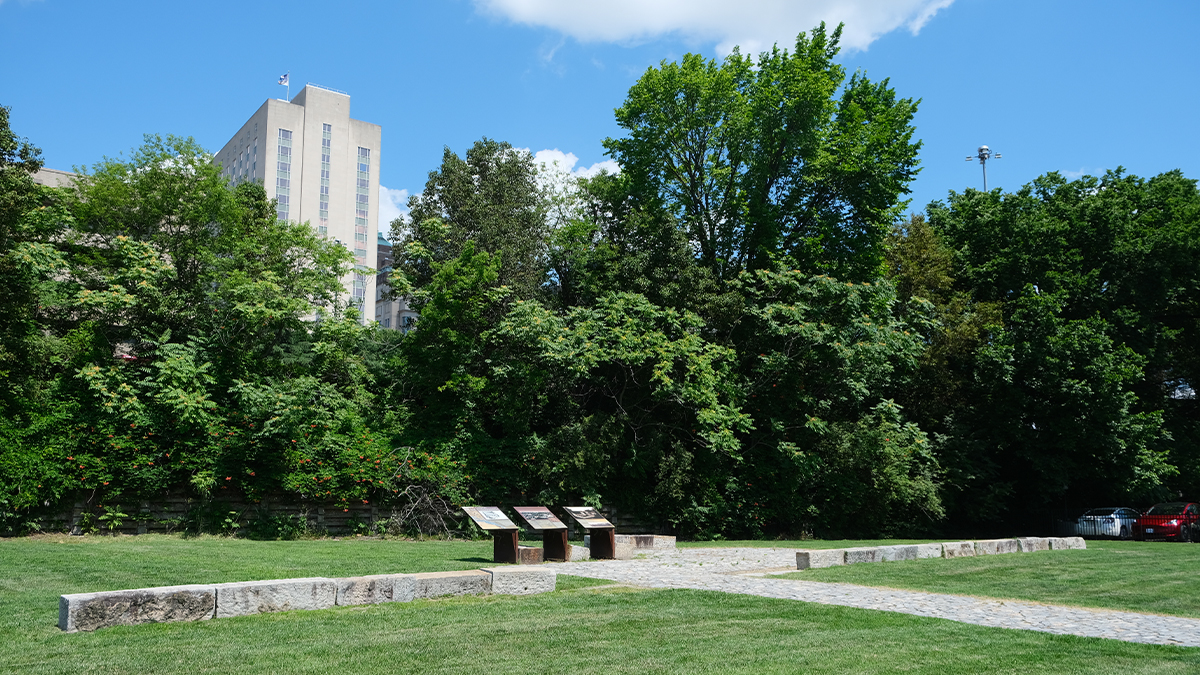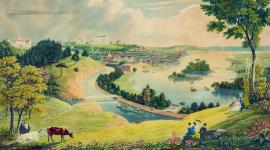Landscape Information
Located along the Richmond Slave Trail north of Main Street Station, this rectilinear site marks the site of a nineteenth century compound infamous for its role in the domestic slave trade. Originally larger, acreage was lost to encroaching development over time, and now measures less than one-half-acre. The site is framed on three sites by an asphalt parking lot and to the west by I-95.
In 1844 slave-trader Robert Lumpkin acquired the site and established a facility to hold enslaved African Americans, a hotel, residence, and auction house. Known as the “devil’s half-acre,” it ranked among the largest antebellum “slave jails” in the city.
By the 1850s the property was characterized by upper and lower terraces separated by a high brick retaining wall. The upper terrace included structures oriented around a central, cobblestone paved courtyard, while the lower terrace featured a two-and-a-half story brick holding facility.
Following the Civil War the property was leased by the Colver Institute, a predecessor to Virgina Union University. In the early 1890s the site was used as a foundry, replaced by a freight depot in 1909. The westernmost section of the former compound was obliterated by the Richmond-Petersburg Turnpike (now I-95) in the 1950s and by the late twentieth century the eastern section of the property was paved with a parking lot. Following archeological excavations (2006-2008), the eastern section was reburied.
Framed by a perimeter fence and a western embankment planted with deciduous trees, the relatively level site is characterized by lawn and is marked by a cobblestone path. The path, laid out to recall the building’s historic footprint, is edged by rows of stone backless benches, three commemorative signs, and railroad ties that reference the nearby Main Street Station.
The site is located within the Shockoe Valley and Tobacco Row Historic District, listed in the National Register of Historic Places in 1983.
















